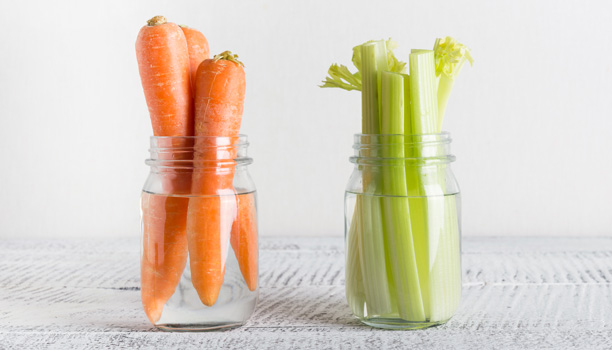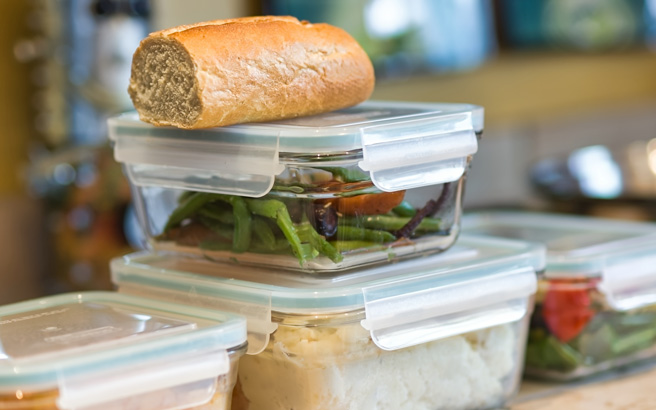 Rachel Clark, a nutritionist at World Cancer Research Fund (WCRF), shares her top ten tips for reducing food waste and making your food go further. They’ll save you money too!
Rachel Clark, a nutritionist at World Cancer Research Fund (WCRF), shares her top ten tips for reducing food waste and making your food go further. They’ll save you money too!
At the beginning of the pandemic last year, it was often hard to get hold of our usual go-to ingredients. We found that planning meals in advance can help you avoid missing out, and it also makes it easier to budget and think about how you’re going to use leftovers. Plan your meals for the week – you could try meat-free Mondays, chilli Tuesdays or fishy Fridays – then make a shopping list. This will make you less likely to buy things you don’t need.
You can also use this opportunity to think of alternatives if your preference is out of stock in shops. For example, if you usually cook with beef mince but can’t buy it right now, look for turkey mince instead. You can even replace mince with lentils in many recipes – an excellent alternative source of protein. I haven’t been able to get any tinned tomatoes recently, so instead have been using very ripe tomatoes to make a wonderful homemade sauce. I simply slow-cook with onions, garlic and herbs!

To avoid food waste and make what you have go further, there are lots of things you can do. Here are my top ten tips!
How to keep fruit and veg fresh
1) Use fruit or vegetables that are past their best to make juice, smoothies or soup.
2) A handy trick I learnt is wrapping lettuce, carrots, courgettes and other vegetables in kitchen paper and then putting them in plastic bags in the salad compartment of the fridge. They keep fresh for longer this way as the paper stops the condensation from softening the veg and also stops mould.
3) Try keeping the stems of vegetables such as broccoli, celery and asparagus in water to help them stay fresh and crisp.

Extra tip: don’t throw fruit and veg away just because they’re past the best before date. They often last much longer, unlike other fresh products such as meat and milk. Check out my video for more tips on this.
Getting creative with leftovers
4) Freeze leftover sauces in ice cube trays and use them to flavour future dishes!
5) Use leftover yoghurt in a cake or scone mixture instead of milk.
6) Measure out portions of rice, potatoes and pasta so you cook the right amount.
7) Don’t throw potato peelings away! Just sprinkle with pepper, chilli or other spices and crisp them in the oven. Yum!

8) Make your bread last longer
Bread is a staple in my house, and if it gets a little stale I refresh it by soaking under running water, then reheating on a moderate heat in the oven until crisp and golden. I also like to make garlic bread fingers with the end crusts from a loaf. Simply grill one side, spread with garlic butter, grill again and cut into fingers.
Extra tip: save sandwich crusts in a plastic bag in the freezer until you have enough to make breadcrumbs.
9) Get your 5 A DAY from the freezer
Frozen fruit and vegetables are often cheaper, but just as nutritious as fresh and still count towards your 5 A DAY. Plus, they may be available when fresh stock is limited.

Extra tip: chop up fresh herbs and store them in a bag in the freezer for up to 12 months.
10) Canned food can be healthy
Canned or tinned foods are great for reducing food waste as they can be stored for longer. They can also be as healthy as fresh options – just make sure you aim for tinned fruit in juice and avoid fruit in syrup.

And don’t limit yourself to tuna and baked beans – especially as they’re unavailable in many shops at the moment. There are lots of fruit (prunes, peaches, pineapple), vegetables (sweetcorn, peas, asparagus), pulses (chickpeas, butter beans, kidney beans) and fish (salmon, sardines, mackerel) that can be bought cheaply in tins.
Extra tip: buy fish, beans and pulses in water rather than in oil or with added sugar and salt.
Watch Rachel explain best before and use by dates
- Updated April 2021

